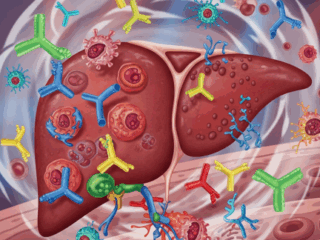
Drug manufacturing has long revolved around batch production, with breaks for quality checks and storage.
Continuous manufacturing, by contrast, represents a paradigm shift in which production flows continuously through an integrated process. Other industries (chemicals, food, oil) have relied on continuous processes for decades, but the pharmaceutical and biotechnology industries have been slower to adapt.
This is beginning to change. Continuous manufacturing is now emerging, especially for Contract Development and Manufacturing Organizations (CDMOs), promising greater efficiency.
According to the International Society for Pharmaceutical Engineering, a company switching from batch to continuous manufacturing cuts operating costs by 50%, reduces waste by a third, and slashes production cycle time by 80%. Such gains are driving enthusiasm for continuous manufacturing in CDMOs.
Benefits of Continuous Manufacturing at CDMOs
Speed and Efficiency
Continuous manufacturing streamlines CDMO operations by eliminating inter-process downtime. This leads to drugs reaching the market faster.
In fact, a Food and Drug Administration (FDA) audit found that continuous production gets products to market about 12 months sooner after submission compared to batch processes.
Improved Quality And Control
With real-time monitoring via process analytical technology (PAT), sensors, and automation, quality is checked continuously rather than only after each batch. This provides thousands of data points to ensure the process stays in control.
Moreover, real-time deviation detection enables immediate corrective action. Leading CDMOs like Neuland Labs are pioneering this shift through quality-by-design (QbD) principles and advanced analytics, creating an ideal foundation for continuous manufacturing adoption.
Lower Inventory And Waste
There’s less need for CDMOs to hold inventory at each stage because continuous manufacturing produces output without large pause periods.
This also reduces waste. For example, a pharmaceutical company reported a 33% reduction in waste after moving to continuous manufacturing. Additionally, continuous processes utilize smaller equipment footprints for a given output, resulting in cost savings.
Flexible Scaling
Instead of scaling up to huge batch sizes, continuous manufacturing allows scaling by running for longer or operating parallel lines. This means production can be adjusted to demand more readily.

CDMOs and Continuous Manufacturing: Regulatory and Industry Trends
Regulatory Confidence and Speed of Approvals
Global regulators are becoming increasingly supportive of continuous manufacturing, recognizing its potential to improve drug quality, reduce supply chain risks, and streamline production.
In the United States, the FDA has taken a proactive role in fostering this shift:
- In 2022, the International Council for Harmonisation (ICH) released a harmonized guideline (ICH Q13) providing standardized definitions and expectations for continuous manufacturing processes. This document is widely regarded as a key enabler, giving drugmakers a clear roadmap for regulatory compliance.
- A 2022 FDA review showed that drug applications involving continuous manufacturing processes were approved as fast or even faster than those relying on traditional batch methods.
Legislative and Institutional Support
In 2021, a bill was passed to establish Centers of Excellence in Advanced and Continuous Pharmaceutical Manufacturing, aimed at accelerating R&D and knowledge-sharing in this area.
For instance, the Department of Defense granted $69 million to Continuus Pharmaceuticals to enhance continuous manufacturing capabilities for essential medicines, highlighting the strategic importance of this technology for national supply chain resilience.
These efforts reflect a broader policy push stating that continuous manufacturing in CDMOs is no longer viewed as a high-risk innovation but as a key pillar for the future of pharmaceutical production.
Industry Momentum and Adoption Trends
As of 2023, approximately 14 FDA-approved drugs incorporate continuous manufacturing in their production. The first such approval came in 2015, and in 2020, the FDA approved the first protein therapeutic manufactured using a continuous process.
Equipment manufacturers have also reported a spike in demand for continuous manufacturing systems, indicating broader adoption across the pharma supply chain.
What’s Next for CDMOs in a Continuous Manufacturing Era
Is continuous manufacturing the future of CDMOs? The growing consensus is: yes, but with caveats. Continuous manufacturing will likely dominate where it offers the clearest advantages, such as high-volume production runs, rapid scale-up requirements and processes needing tighter quality control.
In contrast, batch processing will still be relevant for:
- Low-volume or niche drugs
- Flexible multi-product manufacturing environments, especially at CDMOs
- Situations where shared equipment and small-batch agility remain cost-effective
Facilities of the future may adopt a modular mindset, capable of toggling between continuous and batch as needed. This could involve:
- Continuous modules for specific steps (e.g., synthesis or crystallization)
- Batch modes for complex formulations or small-batch fulfillment
- Hybrid workflows customized for molecule type, volume, and lifecycle stage
Embracing The Continuous Manufacturing Trend With Neuland Labs
Embracing continuous manufacturing where it makes sense can position pharmaceutical and biotechnology companies as leaders in efficiency and innovation.
Neuland Labs, a CDMO specializing in small molecules and peptide APIs, exemplifies the kind of forward-looking organization that stands to benefit from this trend.

By leveraging its expertise in complex chemistry and staying attuned to advanced techniques, Neuland is well-positioned to incorporate continuous processes as the technology matures.
In the broader context, the partnership between companies and their CDMOs will be instrumental in determining how widely continuous manufacturing is adopted.
Collaborating on continuous manufacturing could indeed herald a new era for pharmaceutical production – one where “continuous” becomes an integral part of the future of making medicines.
FAQs
1. How Does Continuous Manufacturing Impact Tech Transfer Timelines For Pharmaceutical Products?
Continuous manufacturing often requires a more integrated tech transfer approach, aligning development, analytics, and engineering early on. While the setup is complex, it can reduce long-term transfer delays due to standardized, data-rich process models.
2. How Are CDMOs Using Flow Chemistry To Enable Continuous Manufacturing For Complex Apis?
Many CDMOs are leveraging flow chemistry as a foundational step in continuous API synthesis. It allows for better reaction control, scalability, and safety, which is especially valuable when handling hazardous intermediates or multi-step small molecule pathways.
3. What Role Can CDMOs Play In Accelerating Continuous Manufacturing Adoption For Early-Phase Molecules?
CDMOs can de-risk early development by offering pilot-scale continuous lines, enabling pharma innovators to test feasibility without committing to in-house infrastructure. This accelerates proof-of-concept and supports regulatory readiness from the outset.
4. What Challenges Do CDMOs Face When Implementing Continuous Manufacturing?
CDMOs face high initial investment costs, infrastructure demands, and a need for specialized expertise in automation and real-time analytics. They must also balance the risk of underutilization for continuous lines tailored to specific products.












